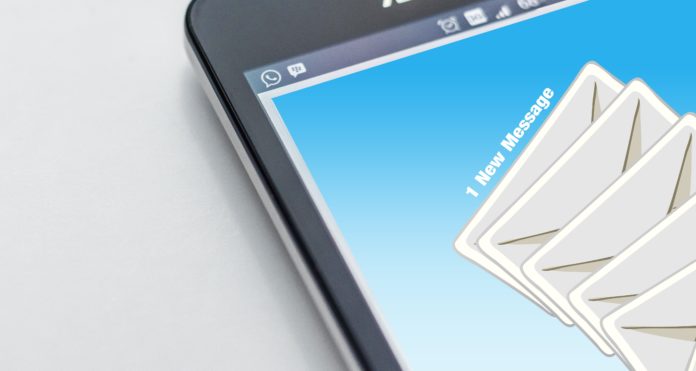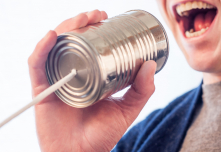
Email marketing is one of the most effective and inexpensive ways for auto dealerships to stay in touch with their customers and use content to drive sales. Unfortunately, it’s also one of the most abused marketing media. If you’re blasting generic emails to your customer lists on a daily basis, you’re probably seeing a lot of unsubscribe requests, which is not good. There’s a right way and a wrong way to do email blasting. Following are some best practices.
Step 1: Identify a Goal
You can’t decide to do something unless you know what you’re hoping to get out of it. So, before you rush through an email eblast and send it out, think about what you’re hoping to accomplish. Obviously, selling more cars or getting more cars into the service drive is always the goal, but be more specific than that. Are you hoping to drive traffic to the website? Looking to generate phone calls? Make people aware of an event you’re planning? Identifying your goal will help you determine what to do in Steps 2 and 3.
Step 2: The List
Who are you sending it to? Think about it. Before you can decide what message you want to convey, you need to know your audience. Perhaps you’re trying to reach out to unsold prospects in your CRM, or previously sold customers who may have a lease or loan expiring soon, or service customers whose warranties are expiring. Don’t try and craft “one size fits all” email marketing messages. You need to decide who you want to reach in each campaign.
- If you’re hoping to reach out to unsold prospects in your database, go out a maximum of 90 days.
- If you’re looking to reach people who have a lease or loan expiring soon, make sure you don’t go too far out – you want to be able to help the customers that inquire. Crying wolf (“We can get you out of your lease now no matter what!”) eventually makes your message less believable over time.
- If it’s service customers you’re reaching out to, first make sure your customer relationship management (CRM) is correctly receiving information from your dealership management system (DMS) to ensure your service data is correct. This is especially important if you’ve recently switched CRM or DMS services.
Step 3: The Creative
You’ve decided what you’re hoping to get out of this email blast and you’ve come up with your list. Now it’s time to think about the content. In 9 out of 10 cases, LESS is MORE. Think about your own experiences. When you get an email from a company, do you read the entire thing? You scan the subject and maybe the first paragraph, look at a photo or graphic and then either click it, delete it or log onto the website through another device.
So, less is more.
In general, a combination of text and graphics is a safe bet. If it’s all text, recipients tend to gloss over it. If it’s all graphics, recipients may feel it lacks information. Keeping this in mind, a short and targeted eblast with a mix of text and graphics is the way to go.
You want to leave recipients wanting more. If the eblast is about all your great lease specials, highlight three or four specials and then encourage viewers to click through to your landing page to see the rest of the specials. Which brings us to our next step….
Step 4: Get Them to Click/Call to Action
Your ultimate goal is to get email recipients to your website. The best chance of converting the email into a lead is one click away from the eblast. It should be easy for the customer to click on a CTA (call to action) button in the email and get directly to a page that allows them to fill out a lead form (which only a small percentage of people do anymore).
Your eblast should have strong, easy-to-see CTA buttons that click through (in a new window) to the correct landing page. Be sure that when the reader clicks on your email, he or she lands on the page with the correct information. If readers click through to your website and get lost, requiring them to hunt around for information, they’ll bounce. Make sure you’re setting the link to “open in a new window” so the viewer’s browser also remains on the email blast in case they want to go back and reference it.
Step 5: Platform
Where you send your email blasts from is just as important as what you’re sending. For example, CRMs tend to integrate very well. You can often run the list efficiently without having to export it to another system, and the return on investment (ROI) is easy to calculate through reports. However, in some cases, open rates in CRM solutions tend to be lower than in third-party programs.
For instance, sending an email blast in eLeads may result in lower open rates than sending out the same email blast in MailChimp. The eLeads ROI report is great, but the interface for producing the creative elements of the email is clunky (at best) and the open rate tends to be lower than expected. Sending an email blast in MailChimp is easier, looks better and has a more favorable open rate, however, you must first export the list from your CRM and then import it into MailChimp.
Step 6: Measuring Results
Measuring results is a great way to quality-check your email blast. Look at the open rate, the click-through rate and the unsubscribe rate. Talk about these results with your team and brainstorm ideas about how to improve them.
For instance, if your open rate was low, perhaps your subject line needs work, or maybe you didn’t use a good list. If your click-through rate was low, consider that it was your design or your CTA buttons. Perhaps it was the content (or lack of it) in the eblast.
Email blasts are a great way to reach a large number of customers with minimal expense. With a little pre-planning and thought, you can maximize the opportunity.












